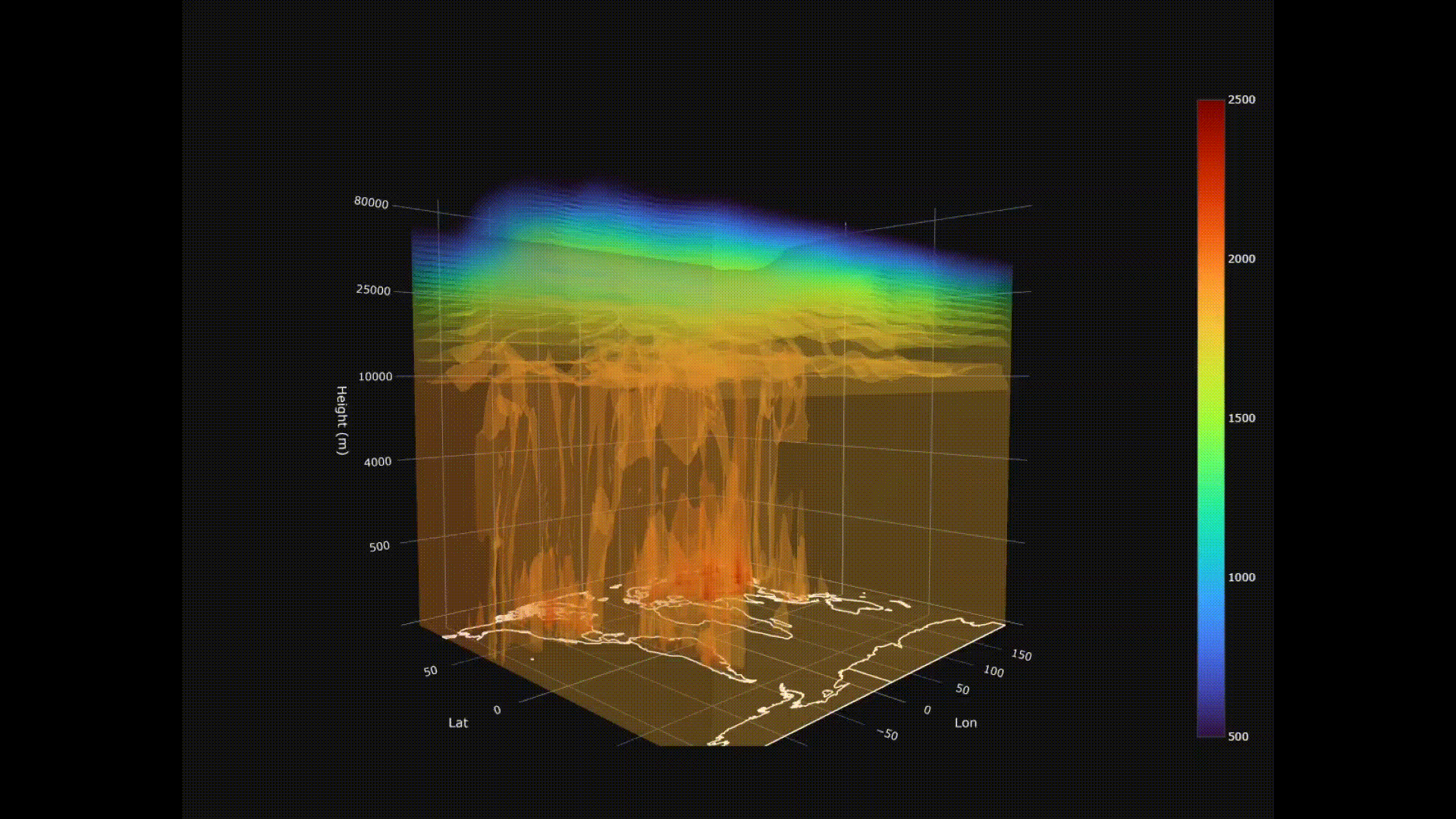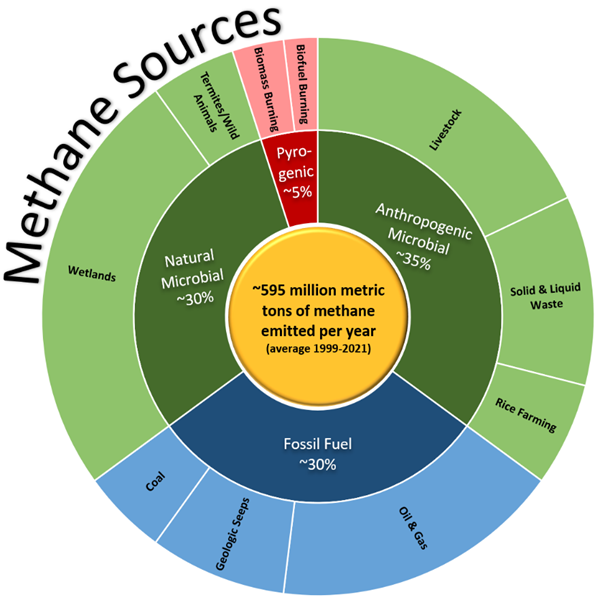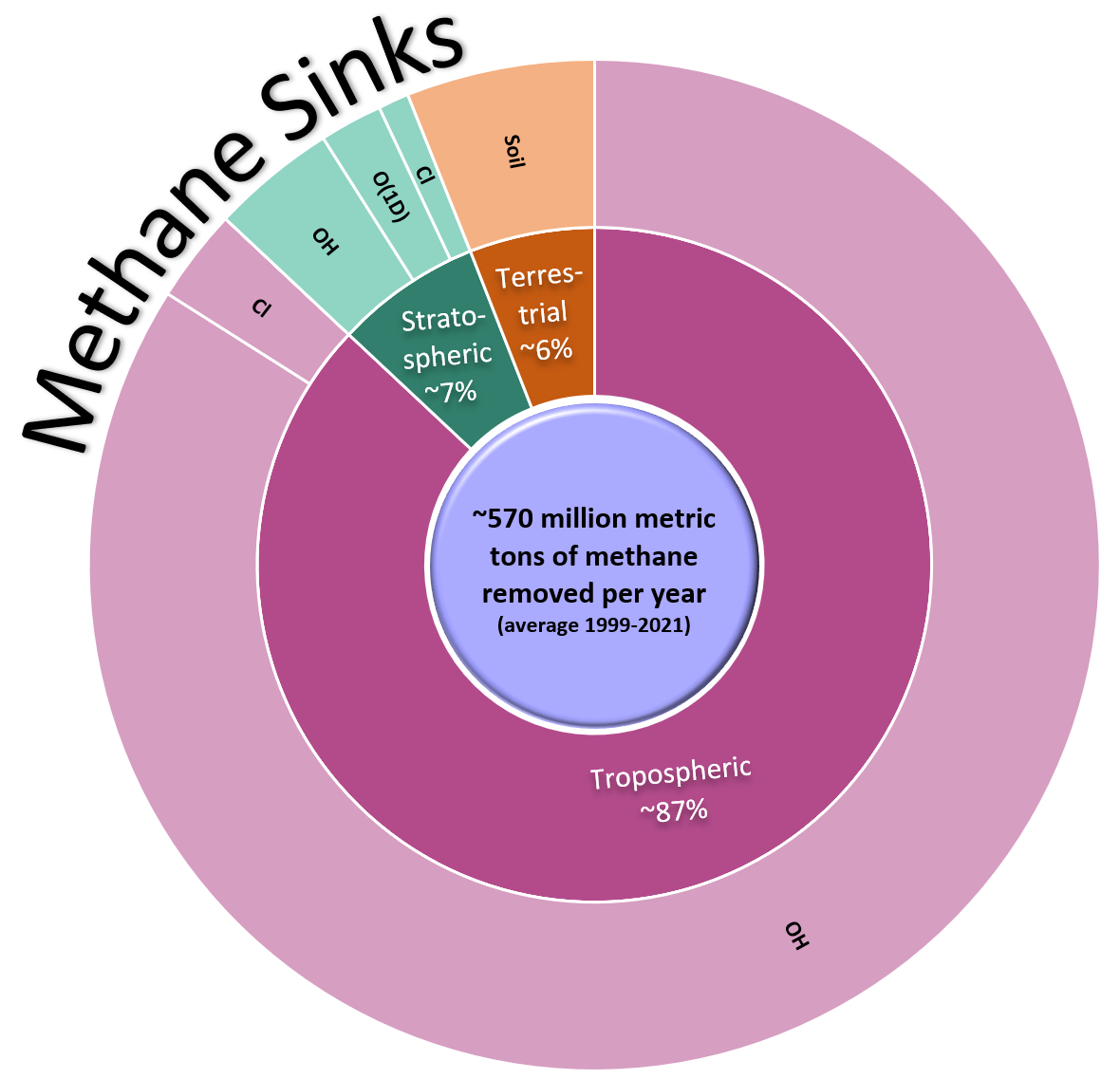Information
Home FAQ Project Goals Documentation Collaborators TutorialResults
Fluxes Observations Evaluation Visualization DownloadGet Involved
Suggestions E-mail List Contact UsResources
How to Cite Version History Glossary References BibliographyCarbonTracker-CH4
Welcome to CarbonTracker-CH4 2025!
The goal of CarbonTracker-CH4 is to provide quantitative estimates of methane emissions from microbial, fossil, and pyrogenic sources at a global scale. CarbonTracker-CH4 emission estimates are consistent with observed patterns of methane (CH4) and its stable isotopic ratios (δ13C-CH4) in the atmosphere.

Methane plays an important role in the chemistry and energy budget of the atmosphere. With a global warming potential of 28-34 over a 100-year horizon, methane is a potent greenhouse gas. Atmospheric methane has a lifetime of about a decade, and it is ultimately oxidized to CO2. Controlling methane emissions also has implications for air quality, since oxidation of CH4 leads to tropospheric ozone formation in polluted environments. As a result of high global warming potential and health impacts, the Global Methane Pledge was launched during COP 26 in November 2021, and more than 150 countries are currently participating to develop national methane action plans to drive anthropogenic methane reductions in key methane-emitting sectors.
Methane emissions can be broadly grouped into three categories: microbial, fossil, and pyrogenic sources. Microbial emissions are due to methane-generating microbes (methanogens) found in anaerobic environments such as natural wetlands and rice paddies, oxygen-poor freshwater reservoirs (such as dams), digestive systems of ruminants and termites, and organic waste deposits (such as manure, sewage, and landfills). Fossil methane formed over millions of years through geological processes. It is vented from the subsurface into the atmosphere through natural features (such as terrestrial seeps, marine seeps, and mud volcanoes), and through the exploitation of fossil fuels; coal, oil, and natural gas. Pyrogenic methane is produced by the incomplete combustion of biomass and soil carbon during wildfires and of biofuels and fossil fuels.
These three types of emissions have distinct stable carbon isotopic signatures (more information on carbon isotopes here). Methane emissions from microbial sources are isotopically lighter (less 13C) than emissions from fossil and pyrogenic sources. The isotopic composition of atmospheric methane — measured at a subset of surface stations — has therefore been very useful to constrain its source.
Atmospheric methane has three sink mechanisms: atmospheric oxidation by OH and Cl throughout the atmosphere, destruction by O(1D) in the stratosphere, and surface uptake in aerobic soils. Each methane sink process shows a different preference for reacting with the light 12C over the heavier 13C.
The possibility of future increased methane emissions due to changing climate is a feedback process that is important to understand. Large stores of carbon are thought to be present in the frozen soils and permafrost of the Arctic, and increased decomposition as soils thaw and warm could mean that the Arctic will become a significant source of both atmospheric methane and carbon dioxide. Modeling systems like CarbonTracker-CH4, which merge long-term observations with bottom-up emission estimates and atmospheric transport models, provide help in understanding, tracking, and predicting climate feedbacks related to greenhouse gas emissions.


(right) Pie chart of global mean CH4 oxidation from tropospheric, stratospheric, and terrestrial sink sectors.
The CarbonTracker-CH4 observing system
CarbonTracker-CH4 surface flux estimates are consistent with atmospheric CH4 and its stable carbon isotope (δ13C-CH
Table 1. CarbonTracker-CH4 CT-CH4 2025 observations by observation type, which comprises measurement platform and instrument (in ObsPack parlance this is a project). More information on CH4 and δ13C-CH4 measurements used in CT-CH4 2025 can be found in the documentation.
| Number of | Number of | ||||
|---|---|---|---|---|---|
| Observation Type | Datasets | Observations | Not Assimilated | Assimilated | Withheld |
| surface-insitu | 139 | 9 100 900 | 8 145 389 | 907 753 | 47 758 |
| surface-flask | 137 | 127 641 | 10 266 | 111 501 | 5 874 |
| surface-pfp | 38 | 47 243 | 15 360 | 30 297 | 1 586 |
| tower-insitu | 138 | 7 434 448 | 7 076 755 | 339 816 | 17 877 |
| aircraft-pfp | 48 | 96 366 | 51051 | 42 999 | 2 316 |
| aircraft-flask | 13 | 33 184 | 20 427 | 12 154 | 603 |
| aircraft-insitu | 17 | 3 158 223 | 3 158 223 | 0 | 0 |
| shipboard-flask | 10 | 9 945 | 645 | 8 822 | 478 |
| aircore | 1 | 81 771 | 81 771 | 0 | 0 |
| Total | 541 | 20 089 721 | 18 559 887 | 1 453 342 | 76 492 |
Figure 2. CarbonTracker-CH4 Observational Network. Click on any site marker for more information.
Other CarbonTrackers
- CarbonTracker-CO2 North America
- CarbonTracker-CO2 Europe
- CarbonTracker-CO2 Asia
- CarbonTracker-CO2 Australasia (under construction)
